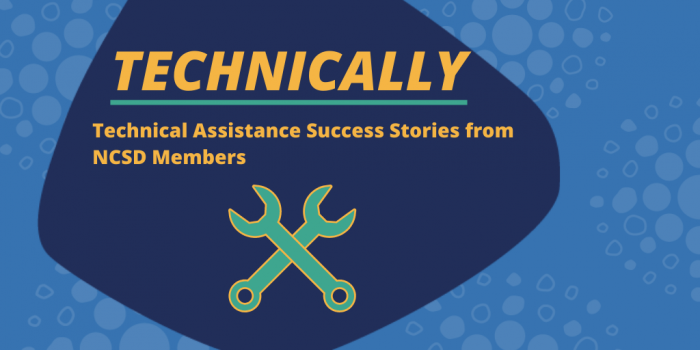Technically: Contact Tracing Metrics
In this week's edition of Technically, Loriann Stanislawski, MS, MCHES with the Wisconsin Division of Public Health details how technical assistance from NCSD helped support her role in working with the COVID Response Team on contact tracing efforts.

What challenge was your STD program experiencing?
I began working with our COVID Response Team on Contact Tracing efforts. I was very excited to share what I could from my experience in STDs with the communicable disease epidemiology staff in the Wisconsin Division of Public Health. My most recent work in the STD Section was training local health department staff on DIS work for gonorrhea and chlamydia. I began helping with training for new state contact tracers. Wisconsin had not had a contact tracing team prior to the COVID outbreak, when the City of Milwaukee was overwhelmed and the state offered to provide surge capacity for the LHD. An amazing group of epidemiologists, the EIS Officer, and the State Public Health Veterinarian began work to create a team. I only chimed in on ideas that I know were proven to work in the world of STDs and to assist with training and share resources. When we came upon the idea of metrics for contact tracing efforts, I immediately thought of the old “DIS Stats” that were very prevalent when I began working in STDs in the early 1990s. So, I immediately went to the NCSD Program Committee members and asked for advice and resources.
What specific technical assistance tools and resources were provided to you? How did you use the tools and resources to address your challenge?
NCSD shared many materials, and some states sent me invaluable resources for training and contact tracing models and protocols they developed. By far, it seems the COVID-19 Contact Tracing Playbook was most valuable. I shared these resources with the new staff (from the WI Department of Revenue) who took over organizing the efforts for Contact Tracing for Wisconsin with our State Public Health Veterinarian. She has sharp keen, skills in public health and was heading up the public health recommendations and creating metrics for use in Wisconsin. The Playbook is a critical resource, and it left my hands and went to staff who manage our surveillance system (WEDSS) and other epidemiologic staff who choose the best ways to set up data captures and metrics to evaluate how this new team was working.
What are the next steps your STD program plans to take (or have already taken) to address your challenge?
The newly established Wisconsin Contact Tracing Team has a lot of work to do to train new staff, continue establishing protocols, and provide compassionate and confidential care to Wisconsin residents. Our use of metrics to measure how the team is successful and how the team may need shoring up with training and development of skills for staff is key to our success in getting ahead of the epidemiological curve. NCSD’s expertise from years in a world of STDs that seem to never end, and the ceaseless, tireless efforts of DIS who contribute to the integrity of profession of field epidemiology has been an invaluable asset to combating COVID-19 in Wisconsin and around the nation. STD Programs are definitely the hidden jewel of public health.
Resource
Meet Loriann Stanislawski
Loriann Stanislawski has degrees in Health Education and Health Administration. She is a Public Health Educator, Advanced with the Wisconsin Division of Public Health’s STD Control Section. Loriann has worked in public health, focusing on STD Control for about 30 years, starting her career with CDC as a Disease Intervention Specialist for the Chicago Board of Health, working with patients daily in the clinic and in the field. After a few years accepting a position in the Wisconsin Division of Public Health, Loriann continued working with patients as well as providing training and technical assistance to local city and county health departments statewide. She has managed the states cooperative agreement with CDC and been an active Associate Member of NCSD, serving on the Program Committee.
To request, TA or capacity building, visit our TA page or contact Charlie Rabins, consultant, capacity building.